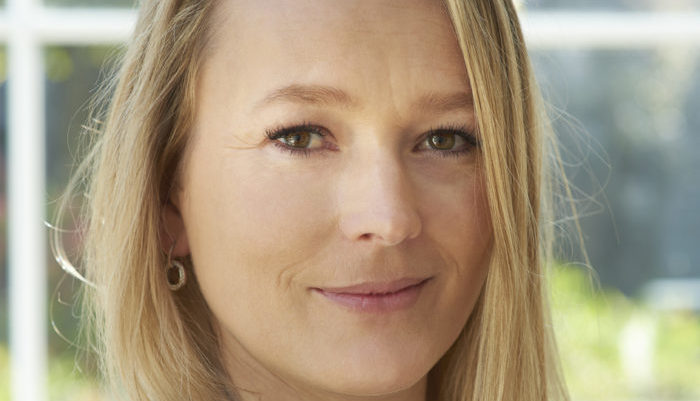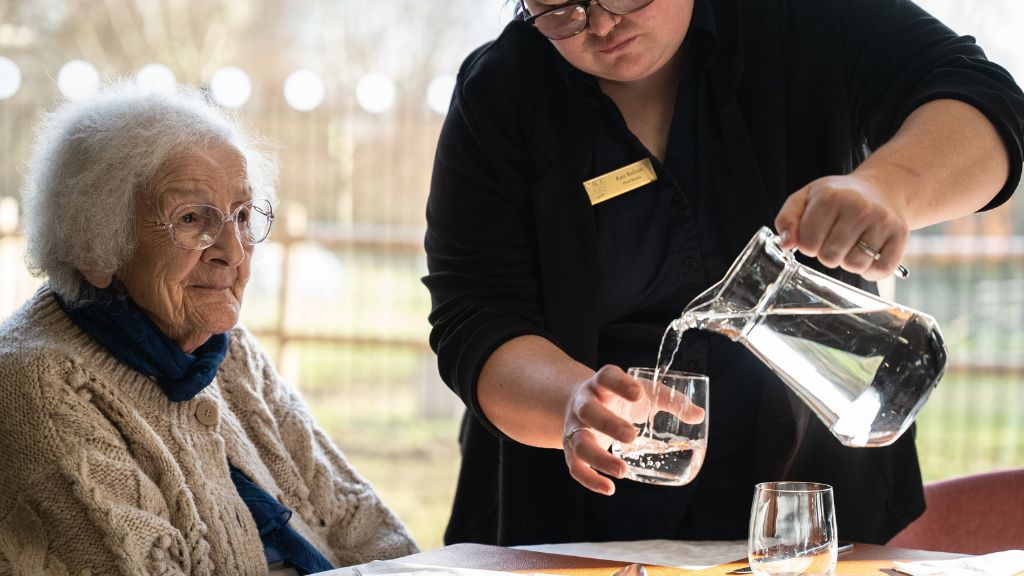Your friends in the north

In the first of our new series of in-depth interviews with industry leaders, Rachel Beckett, chair of Wellburn Care Homes, discusses recruitment challenges, infection control and the redesign of the Northeast provider’s pioneering St Catherine’s dementia care home in York.
CT: How challenging is the current recruitment climate for you as a
business?
RB: Undoubtedly, recruitment and retention are the single biggest challenges our business and the care sector as a whole is currently facing – in fact, it’s now commonly being referred to as the greatest workforce crisis in the sector’s history. The crisis is so stark, some of the headline stats are more than enough to paint a clear picture – currently there are around 165,000 unfilled vacancies with a Care England survey showing a whopping 95% of care providers are struggling to recruit staff. Put simply, the current state of play is there are nowhere near enough potential candidates in our local communities to fill all of our vacancies and all of the other care home providers vacancies in the region. The problem of finding and attracting suitable candidates is even more desperate in the smaller more rural communities we exist in, and that’s all before we even consider the significant challenge of retaining existing staff.
CT: What innovative ways are you seeking to attract people into the
business and to help retain your current staff?
RB: Imagine all care home providers running the same sort of recruitment adverts in all the same newspapers, magazines, radio stations – all aiming at the same reduced candidate pool, all at the same time. We did not only have to think outside of the box in terms of how we could reach potential candidates, but how we could unlock the potential to reach new candidates who had never even previously considered a career in care – whilst also simultaneously creating a retention strategy to make sure we keep hold of our best staff.
Our current strategy explores and utilises routes into markets we’ve never used before, with more off the cuff, spontaneous elements, including some guerrilla marketing and even mobilising not only our existing staff, but also our customer base too, to help reach new candidates.
Some of the more innovative elements include a beermat campaign, with over 30,000 beermats distributed across bars and restaurants in key localities, including supporting poster campaigns in their restrooms. We’ve also opened a small pop-up shop, that was staffed by our team – designed to show the best of what we as a company have to offer and provide real-time one- to-one engagement with those who are potentially considering a career in care. We’re currently looking for a space in York city centre to do it again.
We also have a ‘Considering a career in care’ pack that potential applicants can order either online or by phone or email, which includes a handy guide to working in care. In terms of retention, we have a raft of benefits for our staff, including training and wellbeing initiatives. We also have a golden hello starting bonus, retention bonus, cycle to work and tech schemes and refer a friend scheme, with limitless referrals. We also offer an employee assistance programme and in-house wellbeing specialist and counselling service, as well as access to occupational health. We offer an in-depth induction and training, paid NVQ qualification and a career pathway that demonstrates a clear progression route. More and more we are seeing staff promoted from within, having been developed for their next role.
CT: What needs to be done to ensure all care home workers are paid a fair wage?
RB: Essentially, better funding from the government and local authorities in terms of room rates which in turn will allow us to pass that on to the employees in the form of a fair wage or the Real Living Wage.
CT: What do you think of government plans to recruit thousands of overseas workers to plug the shortage of social care workers in the UK?
RB: Despite the promotion by government that this is being made
easier through carers being added to the Shortage Occupation List, it still requires a minimum salary of £20,480 and therefore would only either cater for RGN, team leaders/senior carers or specific care assistants working full-time hours. When it comes to our staff, we find a lot of them require flexibility and therefore full-time hours aren’t appropriate for them, so this is not always fit for purpose. Equally the process is time limited and still relatively costly for smaller providers, with sponsorship licence costs, including ongoing costs thereafter too. So, although I think the idea has merits in principle, a lot more work is needed to iron out some of the details and problems to truly have an impact.
CT: What other steps should the government be taking to support care home recruitment and retention?
RB: Extra funding so we could increase wage levels to attract more applications would be a good start. We’ve also been advocating, for a long time now, a joined-up strategy perhaps culminating in a national campaign that serves to make the sector more attractive. Perhaps an above and below the line ad campaign, promoting all the positives a career in care can provide.
CT: What impact is the cost of living crisis having on your workforce and on your operational costs?
RB: We’re seeing a direct impact on our operational costs, but also the
workforce is experiencing cost of living increases that will lead to a significant wage rate increase expectation, or workers will leave the sector to seek higher paid roles.
CT: How are you progressing on your roll-out of Covid-19 boosters?
RB: Generally, our Covid vaccination and booster uptake is still very good, and we have started the roll-out of this autumn’s booster across all our homes for residents and staff. This continues to have a very positive effect in minimising risk and keeping our most vulnerable safe.
CT: What are your key infection control policies and practices going into the winter?
RB: We implemented rigorous infection control practices that went beyond our usual regimes when the Covid-19 pandemic first hit. Since
then, certain policies have been relaxed as we have learned more about the virus and how we manage its risks. For example, we can now allow visitors back inside our homes and staff can move between homes more freely.
However, we do still maintain an infection control level of cleaning of our homes on a regular basis and all staff and visitors still must wear masks at all times. We also operate a booking system for our residents’ visits, whereas prior to the pandemic, we had an ‘open-door policy’ across our homes. This is in place to manage the number of people in the building at any one time as we remain conscious of social distancing.
We continue to review these policies and practices on a regular basis;
this also depends on any infection outbreaks within our homes which
then follow our usual infection control measures which, if necessary, may include closing the home to visits and admissions for a period of time. We continue to audit all of our homes regularly to ensure best practices are continued and maintained to the highest standards.
CT: How do you strike a balance between maintaining infection control and providing person-centred care for residents?
RB: The pandemic has taught us a lot in terms of delivering new and innovative ways of how we deliver person-centred care, even through the most challenging of times. Regular visits with loved ones are permitted, although they are arranged in a more structured system than prior to Covid-19, so our residents are still receiving that much- needed contact with those closest to them. This also means our staff can communicate more freely with our residents’ loved ones again, with having them inside our homes, so we are able to discuss together any changes in their loved one’s care needs and tap into their knowledge and experience to better support our care of the resident – this has been particularly helpful for new admissions.
Off the back of the vaccine roll-out across our staff, residents and the general population proving successful in reducing the risk of Covid-19
infection, we feel more confident to complete pre-care assessments in the community which we had done prior to the lockdown. This means our staff can now go out and meet potential residents face-to-face to conduct a more thorough care assessment and get to know them on a more personal level than we have done previously with assessments conducted over the phone with a relative, or receiving care plans from other facilities.
Each of our homes has a lifestyle coordinator who is responsible for the wellbeing, engagement and events for our residents. Our coordinators have learned a great deal about offering different ways to provide person- centred activities when their usual methods were restricted due to the pandemic, where we could not take residents out on trips outside the home or allow entertainers and community groups into the home. They were put in a position where they had to think outside the box and be more creative in their activity provision and turned their hand to new technologies including interactive tables and inter-home games hosted via Zoom or Teams.
Despite various infection control measures still in place now, these have
relaxed to a point that we are now confident in caring for our residents
and managing risks whilst being able to take them out on excursions outside the home and allow groups into our homes.
This means we can tailor trips out and entertainer bookings to our residents’ wishes providing person-centred care to support their wellbeing, creating joyful and happy memories whilst stimulating their senses, supporting increased engagement and providing muchneeded socialisation.
CT: How are your conversations progressing with local authorities on
the cost of care reforms?
RB: We understand our local authorities have a very difficult job to do, but we are encouraged to be working closely with them now in completing fair cost of care assessments and we’re really looking forward to positive outcomes from this. We also work very closely with Professor Martin Green OBE, chief executive of Care England, on ensuring the care sector gets a strong representation with positive outcomes for everybody.
CT: What are your opinions on the reforms and their chances of success given current funding proposals?
RB: Once again, we understand the difficulties the local authorities face, but we remain optimistic. But put quite simply, something must be done or there will be dramatic effects on the care sector as a whole. We already are sadly seeing a number of care homes having to shut or be sold across the UK.
CT: How did you go about the redesign of St Catherine’s care home in York as a specialist dementia care home?
RB: The journey involved a complete rethink and a top-to-bottom transformation of the home. The journey was long and ambitious, and
involved a heady amount of planning, research and development.
From the outside, other than the new signage, decked in new quirky
branding, anyone could be forgiven for thinking it’s the same old St
Catherine’s. But as you approach the building, there are hints that our
impressive Grade II listed building has had more than a touch-up. From the very first step you take into the home, it’s instantly clear just how much of a transformation it has gone through.
I sat down with my team and talked through my vision and what
I wanted for St Catherine’s future. I needed them to buy into it. My vision
was radical – the home would be redesigned and reimagined to focus
entirely on dementia care. I knew myself and my team would have the
energy and passion required, but I also knew knowledge to place behind that energy was essential to the project’s success. Quite suitably for a place whose name is taken from the patron saint of students and philosophers, it was engagement with academia at Stirling University that proved key to unlocking the project’s potential.
CT: How did you research specialist dementia care to redesign the home’s facilities to best support residents with dementia?
RB: Even before the project had started forming in my mind, I’d been making regular trips to Stirling University. They’re dementia specialists and an architectural university. I met some amazing people, and they convinced me into completing a course in ‘Online Intersection of Dementia + Design’. Whilst on the course, I met Leslie Palmer, chief architect for the Dementia Services Development Centre at the university and a national specialist in young-onset dementia.
Before taking the course, I found I was getting conflicting and confusing
advice on how to proceed. Leslie encouraged me to train up and
empower myself with solid research and theory to apply to my in-the-field experience across design and healthcare.
This education and a continuing working relationship between Leslie
and myself was the final piece in the project’s puzzle. My vision for St Catherine’s was to completely re-examine how a care home can look and feel for someone living with dementia, with the varied and nuanced ways that can take shape.
CT: How does the facility support younger people with early onset
dementia?
RB: During the project I met an amazing woman called Jill Quinn, chief
executive of the charity, Dementia Forward, which not only offers support and advice for anyone affected by dementia, but Jill and her team have extensive knowledge of young onset dementia and provide many community services to support those affected.
Jill and her team inspired me to add this additional element to the project, creating a specialist, seven-bed unit for under-65s living with young onset dementia which we have called The Manor at St Catherine’s. Like this new unit, nothing is the same about St Catherine’s, and everything is new – but the meticulous attention to detail, rooted in science, industry-leading knowledge and design has enabled the home to turn the page and enter a new chapter.
As far as I’m aware, there’s nothing like our new under-65s facility for
miles around and it’s at the cutting edge of early onset care.




